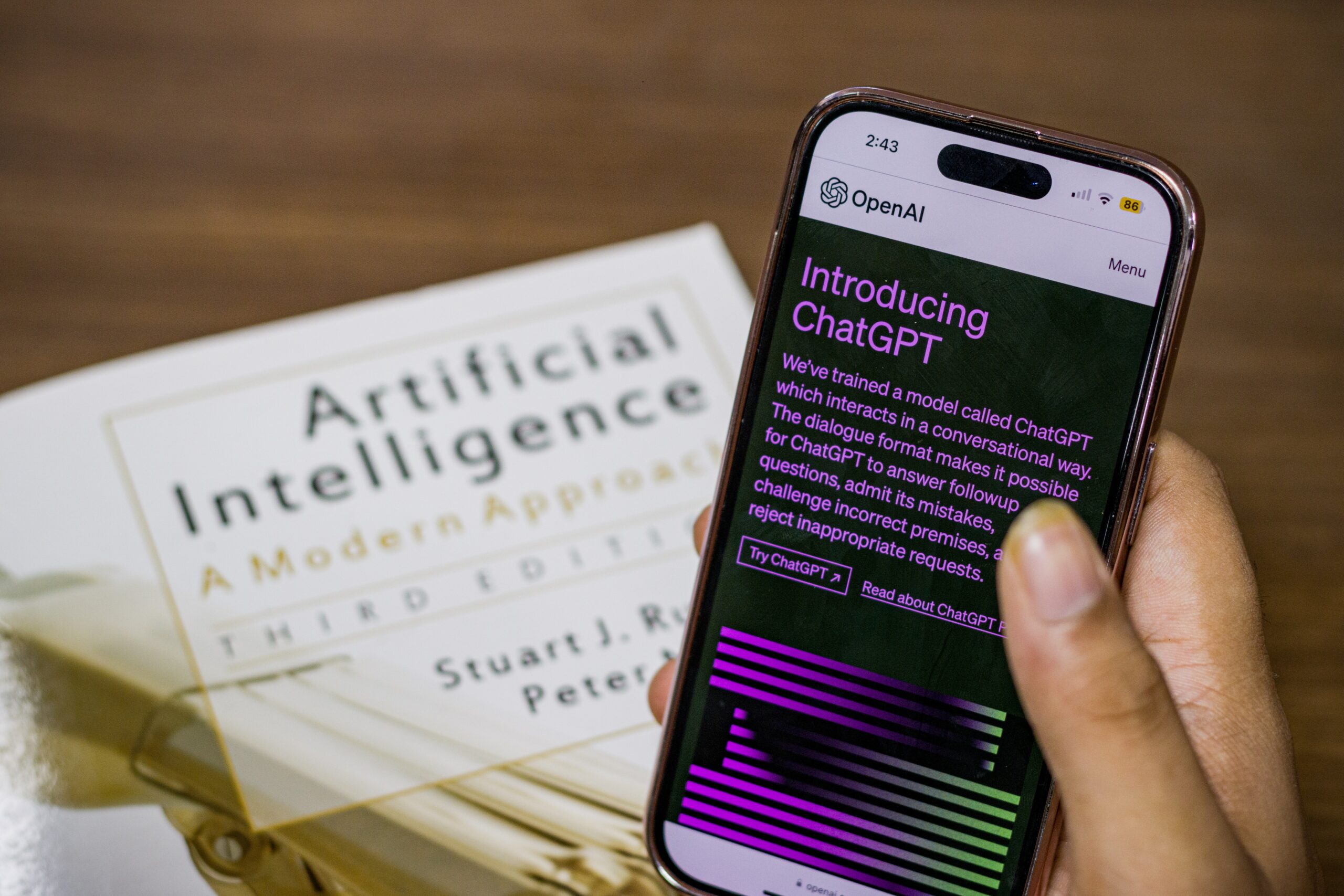10 ChatGPT Hacks for IT Executives
10 ChatGPT Hacks for IT Executives
Hack 1: Streamline Support Operations
ChatGPT can automate and improve IT support processes by automating ticketing and routing, providing self-service support through a knowledge base, offering real-time assistance, generating automated responses, facilitating escalation and handover, and continuously learning and improving.
It streamlines support operations, reduces response times, empowers users, and enhances overall efficiency in addressing IT support queries and issues.

IT executives can implement ChatGPT to handle common support queries and reduce response times by following these steps:
Training:
Train ChatGPT on historical support data or a curated knowledge base to understand common support queries and their appropriate responses.
Integration:
Integrate ChatGPT into the support system, enabling users to interact with the chatbot and submit their queries.
Natural Language Processing:
Utilize ChatGPT’s natural language processing capabilities to accurately understand and interpret user queries.
Automated Responses:
Configure ChatGPT to generate automated responses for common support queries, providing immediate assistance to users.
Escalation and Handover:
Set up escalation protocols for complex or critical issues where human intervention is required, ensuring a smooth handover to support agents when necessary.
By implementing ChatGPT in this manner, IT executives can leverage its capabilities to handle common support queries, provide prompt responses, and reduce overall response times, resulting in improved customer satisfaction and optimized support operations.
Hack 2: Enhance Decision-Making
IT executives can leverage ChatGPT to gather insights and make informed decisions by following these steps:
Data Analysis:
Train ChatGPT on relevant data sets or provide it with access to data sources. ChatGPT can analyze large volumes of data and identify patterns, trends, and correlations.
Natural Language Processing:
Utilize ChatGPT’s natural language processing capabilities to process and interpret complex queries or requests for data analysis.
Queries and Predictions:
Engage in interactive conversations with ChatGPT to ask specific questions or seek predictions based on the available data.
Recommendations and Scenarios:
Seek recommendations from ChatGPT by providing hypothetical scenarios or variables. ChatGPT can generate insights and suggest potential courses of action.

By leveraging ChatGPT in this manner, IT executives can tap into its analytical capabilities, extract valuable insights from data, and make informed decisions based on the information provided by the chatbot. ChatGPT serves as a valuable tool for data-driven decision-making and can assist IT executives in optimizing their strategies and operations.
Using ChatGPT for data analysis, trend identification, and predictive modeling offers several benefits:
Efficient Data Analysis:
ChatGPT can process and analyze large volumes of data quickly and accurately, saving time and resources compared to manual analysis.
Pattern and Trend Identification:
ChatGPT can identify patterns, trends, and correlations within datasets, enabling IT executives to gain valuable insights into customer behavior, market trends, and operational patterns.
Predictive Modeling:
By leveraging historical data and machine learning capabilities, ChatGPT can generate predictive models that forecast near-future outcomes, aiding in proactive decision-making and strategic planning.
Real-Time Interactive Queries:
ChatGPT allows for interactive conversations, enabling IT executives to ask complex queries, explore “what-if” scenarios, and receive immediate responses, facilitating iterative data analysis and exploration.
Accessibility and Ease of Use:
ChatGPT’s natural language processing capabilities make it accessible to users without specialized data analysis skills, empowering IT executives and non-technical stakeholders to derive insights and make data-driven decisions.
Continuous Learning and Improvement:
ChatGPT can be trained on new data and continuously improved, adapting to changing patterns and trends to provide up-to-date and accurate insights.
By utilizing ChatGPT for data analysis, trend identification, and predictive modeling, IT executives can unlock valuable insights, enhance strategic decision-making, identify opportunities for growth, and optimize their business strategies based on data-driven evidence.
Hack 3: Optimize IT Project Management
ChatGPT assists IT executives in managing complex projects more efficiently by facilitating task assignment and tracking, promoting collaboration and communication, optimizing resource allocation, aiding in risk management, providing decision support, and serving as a repository for project documentation and knowledge sharing. It streamlines workflows, improves team coordination, mitigates risks, and enhances overall project management effectiveness. ChatGPT plays a role in generating project reports by analyzing project data and milestones, monitoring progress in real time, and identifying potential bottlenecks. It helps IT executives create accurate reports, track project status, and take proactive measures to ensure smooth project execution.
Hack 4: Automate Routine Tasks
ChatGPT automates repetitive tasks and increases productivity by handling routine tasks, integrating with existing systems, providing automated support responses, scheduling, and reminders, facilitating information retrieval, and offering decision support. This automation frees up time for IT executives to focus on more strategic activities, streamlines processes, and enhances overall productivity within the organization.
ChatGPT can streamline various routine IT tasks, including:
Password Resets:
ChatGPT can automate the process of resetting passwords for users by verifying their identity and generating new passwords, eliminating the need for manual intervention by IT staff.
Software Installations:
ChatGPT can provide step-by-step instructions for software installations, guiding users through the process and addressing common issues or questions, reducing the number of support requests related to software installations.
Network Troubleshooting:
ChatGPT can offer troubleshooting guidance for common network issues, such as connectivity problems or configuration errors. It can provide users with instructions to diagnose and resolve network-related issues without the need for immediate IT assistance.
User Account Management:
ChatGPT can handle routine user account management tasks, such as creating new accounts, modifying permissions, or disabling accounts based on predefined rules or policies.
System Updates and Patches:
ChatGPT can automate the process of informing users about system updates and patches, providing notifications and instructions for installing updates to ensure systems are up-to-date and secure.
Hardware and Peripheral Support:
ChatGPT can assist users with troubleshooting common hardware or peripheral issues, such as printer connectivity problems or driver installations, offering step-by-step guidance to resolve these issues.
License and Asset Management:
ChatGPT can help users with license inquiries, and asset tracking, and provide information on software or hardware availability within the organization.
By automating these routine IT time-consuming tasks, ChatGPT reduces the workload on IT staff, improves response times, and empowers users to resolve common issues independently, resulting in increased efficiency and productivity within the IT support ecosystem.
Hack 5: Improve Customer Engagement
IT executives can leverage ChatGPT to enhance customer experience and engagement in several ways:
Personalized Interactions:
ChatGPT can be trained on customer data, preferences, and past interactions to create personalized experiences. It can address customers by name, tailor responses based on their history, and personal branding, and provide relevant recommendations or offers, fostering a sense of individualized attention.
Customer Query Resolution:
ChatGPT can handle customer queries and provide accurate responses in a timely manner. By understanding natural language and context, it can address a wide range of customer inquiries, from product information to troubleshooting, ensuring prompt and helpful assistance.

Proactive Support:
ChatGPT can be programmed to proactively reach out to customers with relevant information, updates, or offers. It can provide proactive support by detecting patterns, predicting potential issues, and offering solutions or preventive measures, enhancing the overall customer experience.
24/7 Availability:
ChatGPT can provide round-the-clock availability for customer support. It eliminates the limitations of human agent availability and allows customers to access assistance whenever they need it, increasing customer satisfaction and reducing response time.
Seamless Multi Channel Support:
ChatGPT can be integrated into various communication channels, such as websites, mobile apps, or social media platforms, enabling consistent and seamless support across different key points. It ensures that customers can engage with the chatbot through their preferred channels, enhancing convenience and accessibility.
By leveraging ChatGPT in these ways, IT executives can enhance customer experience and engagement. ChatGPT creates personalized content interactions, addresses customer queries promptly, provides proactive support, ensures 24/7 availability, enables multichannel support, and drives continuous learning and improvement, ultimately leading to higher customer satisfaction and loyalty.
Hack 6: Facilitate Knowledge Management
ChatGPT can be utilized as a knowledge management tool for IT executives, offering several benefits in capturing, organizing, and retrieving internal knowledge within the organization:
Knowledge Capture:
IT executives can train ChatGPT on relevant internal documentation, best practices, or technical knowledge. The chatbot can capture and store this information, ensuring it is preserved and easily accessible.

Organization and Categorization:
ChatGPT can assist in organizing knowledge by categorizing information into topics or areas of expertise. It can create content and a structured knowledge base, making it easier for IT executives to navigate and locate specific information when needed.
Search and Retrieval:
ChatGPT’s natural language processing capabilities enable intuitive search engines and retrieval of knowledge. IT executives can ask specific questions or describe their information needs, and ChatGPT can provide relevant responses or direct them to the appropriate resources within the knowledge base.
The benefits of using ChatGPT as a knowledge management tool include efficient knowledge capture, organized information retrieval, enhanced accessibility, continuous learning, and improved collaboration. By leveraging ChatGPT in this way, IT executives can optimize knowledge utilization, streamline workflows, and enable faster and more informed decision-making within their organization.
Hack 7: Enable Virtual IT Assistance
ChatGPT can be utilized as a virtual IT assistant for IT executives, providing real-time assistance, troubleshooting, and guidance.
It offers immediate support, helps in resolving IT issues, acts as a knowledge repository, automates routine processes, offers decision support, and continuously learns and adapts to user needs. As a virtual IT assistant, artificial intelligence, ChatGPT enhances productivity, streamlines workflows, and assists IT executives in making informed decisions.

Hack 8: Strengthen Security Measures
ChatGPT enhances cybersecurity for IT executives by helping identify vulnerabilities, detect threats, and analyze security logs. It assists in assessing weaknesses, detecting suspicious activities, analyzing security logs, guiding incident response, enforcing security policies, and providing security awareness training. By leveraging ChatGPT, IT executives can strengthen their cybersecurity defenses and effectively respond to potential threats.

Hack 9: Foster Collaboration and Communication
ChatGPT facilitates seamless collaboration among IT teams by providing real-time communication, knowledge sharing, and brainstorming features. It enables real-time messaging for team family members to exchange updates and discuss projects.
ChatGPT acts as a knowledge repository, allowing teams to capture and share best practices, solutions, and resources.
It supports cross-functional collaboration, bringing together teams from different domains. ChatGPT aids in brainstorming sessions, providing creating prompts and suggestions for idea generation.
It helps with task assignment and tracking, ensuring transparency and accountability. Integration with collaboration tools enhances the overall collaboration experience. With ChatGPT, IT teams can collaborate effectively, share knowledge, and foster innovation.

Hack 10: Stay Updated with Emerging Technologies
ChatGPT assists IT executives in staying updated with the latest technological advancements. It analyzes industry trends, monitors tech news, and job description, and recommends innovation strategies. By leveraging ChatGPT, IT executives can stay informed about emerging technologies, understand their implications, and formulate strategies to adopt and leverage them effectively
FAQs
How to use ChatGPT to increase productivity?
ChatGPT can be used to automate tasks, access information quickly, receive real-time assistance, facilitate collaboration, and provide decision support, all of which contribute to increased productivity.
How does ChatGPT affect productivity?
ChatGPT affects productivity by automating routine-specific tasks, providing quick access to information, offering real-time assistance, enabling collaborative workflows, and assisting in decision-making, resulting in more efficient and productive work processes for IT healthcare professionals.
Conclusion
ChatGPT serves as a valuable tool for IT executives, providing assistance in various areas such as IT support, knowledge management, project management, cybersecurity, collaboration, and staying updated with technological advancements.
Its capabilities streamline processes, enhance decision-making, promote collaboration, and support innovation. By leveraging ChatGPT, IT executives can effectively tackle challenges, improve productivity, and drive their organizations toward success in the ever-evolving IT landscape
Get A Free Estimate
Success Stories


